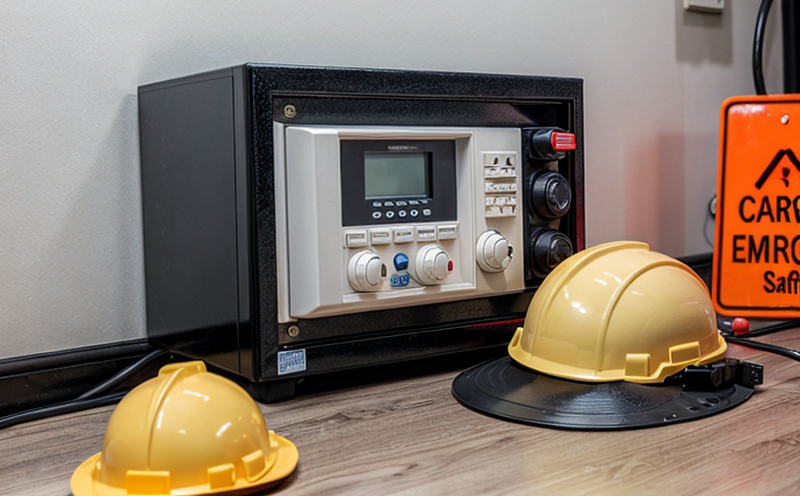ASTM F1468 Aircraft Oxygen Mask Testing
The ASTM F1468 standard is a critical benchmark in aerospace and aviation safety. This testing protocol ensures that oxygen masks meet the highest standards of performance, reliability, and safety under various conditions. Compliance with this standard is essential for manufacturers aiming to ensure their products are fit for use on commercial aircraft.
Aircraft oxygen masks play a pivotal role during emergency situations by providing passengers and crew with breathable air in case of cabin depressurization or other emergencies. These masks must be reliable, durable, and capable of delivering oxygen at the required flow rates under specified conditions. ASTM F1468 sets out detailed requirements for testing these vital safety devices to ensure they function correctly.
The standard specifies a series of tests that evaluate various aspects of the mask's performance, including but not limited to:
- Visual inspection
- Elasticity and flexibility at different temperatures
- Oxygen flow rate measurement
- Durability under repetitive loading cycles
- Leakage rates during use
- Sealing effectiveness around the face
- Compatibility with various breathing systems
- Response time to emergency deployment
These tests are conducted in controlled environments that simulate real-world conditions, ensuring that the oxygen masks perform consistently and reliably across different scenarios. The results of these tests provide critical data for manufacturers and regulatory bodies to verify compliance with international safety standards.
The importance of ASTM F1468 testing cannot be overstated. It ensures that aircraft oxygen masks are not only reliable but also capable of delivering the life-saving oxygen needed in emergencies. This standard is particularly important given the stringent regulations governing aviation safety, and compliance can significantly enhance a manufacturer's reputation for quality and reliability.
Compliance with ASTM F1468 testing is mandatory for manufacturers to ensure their products meet the required standards set by regulatory bodies such as the Federal Aviation Administration (FAA) in the United States. Failure to comply can result in significant legal, financial, and reputational consequences.
Scope and Methodology
The ASTM F1468 standard outlines a comprehensive series of tests designed to evaluate the performance characteristics of aircraft oxygen masks. The scope of this testing is broad, encompassing both static and dynamic evaluations to ensure that the masks meet all specified criteria.
The testing process begins with an initial visual inspection. This step ensures that there are no visible defects or damages on the mask before any further tests are conducted. Following this, the masks undergo a series of environmental stress tests to assess their durability and performance under various conditions. These tests include:
- Temperature cycling: Exposure to extreme temperatures to simulate different flight environments.
- Humidity testing: Ensuring the mask can operate effectively in humid conditions.
- Vibration testing: Assessing how well the mask withstands vibrations typical of aircraft operations.
In addition to environmental stress tests, oxygen flow rate and leakage testing are conducted. These tests ensure that the masks deliver the correct amount of oxygen at the right pressure and that there is minimal leakage during use. Durability under repetitive loading cycles also forms a crucial part of the testing process. This ensures that the mask can withstand repeated deployments without compromising its effectiveness.
The final step in ASTM F1468 testing involves assessing the sealing effectiveness of the mask around the face. This test evaluates how well the mask adheres to the user's face, ensuring it provides a reliable seal and thus effective delivery of oxygen during use.
Once all these tests have been completed, the results are analyzed comprehensively to ensure that each aspect of the mask meets the stringent requirements set by ASTM F1468. This ensures that only masks that pass all these rigorous tests can be considered compliant with this standard.
Why Choose This Test
- Regulatory Compliance: Ensures compliance with FAA and other aviation regulatory standards.
- Enhanced Reliability: Guarantees the mask's reliability under various conditions, enhancing safety during emergencies.
- Improved Quality: Identifies potential issues early in the manufacturing process, improving overall product quality.
- Customer Trust: Builds trust with customers and stakeholders by demonstrating a commitment to high standards of safety.
- Competitive Edge: Demonstrates a manufacturer's expertise and commitment to excellence, enhancing market competitiveness.
- Reduced Risks: Minimizes the risk of product failure during critical moments, thereby reducing potential legal liabilities.
The ASTM F1468 testing process is designed not only to meet regulatory requirements but also to provide a robust framework for ensuring that aircraft oxygen masks are safe and effective. By choosing this test, manufacturers can ensure they are delivering the highest quality products to protect passengers and crew during emergencies.
Environmental and Sustainability Contributions
The ASTM F1468 testing process not only focuses on immediate safety but also considers broader environmental and sustainability contributions. By ensuring that aircraft oxygen masks perform optimally under various conditions, this standard helps to minimize the risk of emergency situations, which in turn can reduce fuel consumption during evacuation procedures.
In addition, the durability tests conducted as part of ASTM F1468 contribute to reducing waste by ensuring that these critical safety devices last longer and are less likely to require replacement. This reduces the environmental impact associated with frequent manufacturing and disposal processes.
The testing process also includes assessments for compatibility with various breathing systems, which can lead to more efficient use of resources in emergency situations. By ensuring that oxygen masks work effectively across different systems, this standard helps optimize resource utilization, thereby contributing positively to sustainability efforts.
Overall, the ASTM F1468 testing process plays a crucial role in enhancing safety while also supporting broader environmental and sustainability goals within the aerospace industry. This holistic approach ensures that manufacturers are not only meeting immediate regulatory requirements but also contributing to long-term sustainability initiatives.





